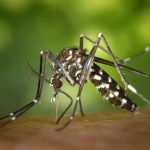Can you give a complete answer to this question, What’s your face shape? You may give an answer with round, diamond, oval or square like one word. Although we categorized face shapes into several groups. Our face shapes and facial features have a huge diversity. Genetically It is known as a multipartite trait.
Therefore, for describing your face precisely we can use the loci of your genome that responsible for your facial features. But the problem is the identification of exact genes that responsible for these type of multipartite trait is a difficult task.
So far scientists had been identified few genes. Including distance between eyes and width of the mouth. Recently Researchers from KU Leuven and the universities of Pittsburgh, Stanford, and Penn State conducted a research for identifying genes that responsible for our face shape.
They have published their results on nature genetics. According to this new publication they were able to identify 15 new genes that correspond to specific features of our face.
The interesting finding is seven genes of these identified genes are responsible for the shape of our nose. This is very important because forensic examiners are failed to determine nose shape only with a skull. But now, these new findings may be used to determining the nose shape.
In this study, the researchers used a data-driven approach to recognise these genes. They have sampled 2,329 face shapes of europian people as 3D facial images, allowing for the identification of genetic effects on facial shape.
Identification of genes that responsible for face shape is very important for facial reconstructive surgeries and as said earlier in forensic science.
According to this research group, We are not able to determine exact shape and features of a human face soon based on his or her genome. Also, it is a difficult task because Our face features effect from environment and living style.
The methodology used in this study is a new method. It can be used for other phenotype based researches successfully.


